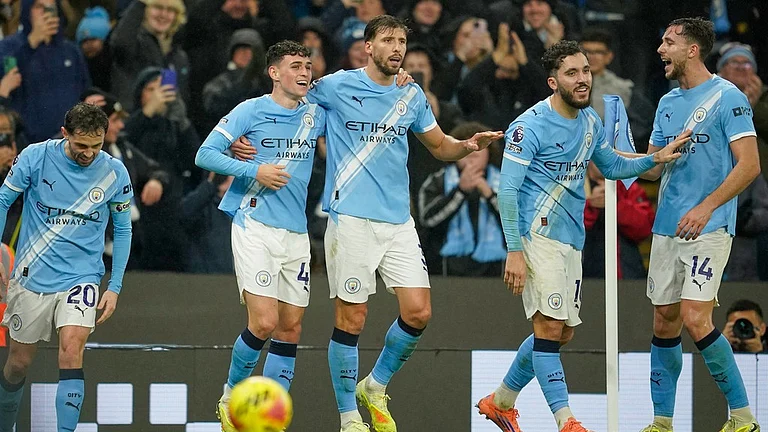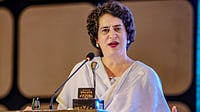COMPETITIVE CONCEPTS
OVER one in three American homes has a personal computer (PC). Over 90per cent of these run Microsofts Windows programmes and use Intel microprocessors,often called the Wintel monopoly. And Bill Gates, chairman and co-founder of Microsoft, isthe worlds richest man with a net worth of $18 billion. The enhanced capabilities ofaudio, video, graphics and games are crammed into todays high-end PC. But prices areyet to be commonly affordable. And before the "every home needs a PC, if youdont your childs education will suffer" marketing mantra gets out ofhand, opponents have got into action.
Enter the network computer (NC), a low cost computer with no storagethat grabs programmes from the network as opposed to the local hard disk (the PCsstorage device). A concept driven by Microsoft arch rivalsIBM, workstation maker SunMicrosystems and database behemoth Oracle, to name a few. But, how feasible is it? Sunrecently demonstrated a working prototype called the Javastation. But the difficult partis to develop software that can adapt to this network paradigm and at least in theforeseeable future, the PC is here to stay. The NC could be a low cost alternative tothose who dont need the power and storage of a PC. But Intel and Microsoft have nowannounced a NetPC, a stripped-down low-cost PC. The battlelines have beendrawn.
KING ENTREPRENEUR
MASTER entrepreneur Prabhu Goel has done it again. He founded Gateway DesignAutomation, a firm that developed software tools for engineers designing integratedcircuits, in the early 80s. In 1990, Gateway was acquired by Cadence Design Systems,a leading US software firm, for a whopping $60 million. Goel then invested in severalstart-up ventures, as venture capitalist and founder. Recently, his second brainchild,Frontline Design Automation was acquired by Avanti! Corporation, arch rival of Cadence,for $65 million. Goel has established software development centres in India for most ofhis companies. Cadence, since acquiring Gateway, has expanded the Indian centre based inNoida near New Delhi, to 150 employees. Goel is now chairman of Duet Technologies, asoftware firm which employs 200 people in India and the US. "There is tremendoussoftware potential in India," says Goel. "But, its difficult to findexperienced software engineers, though there is a large pool of inexperienced engineerswho can be trained." Goel has also established Foundation for Excellence, a fund toassist in educating children in India, besides other philanthropic endeavours.
TAPPING THE DESI CRAZES
NO matter which part of the planet Indians travel to, the favourite pastimes are filmsand cricket. Tapping into this mania is Shiraz Jiwani, a Pakistani immigrant and owner ofNaaz Cinema, a theatre in Fremont, northern California. The theatre shows Hindi filmsdaily, and Malayalam, Telugu and Tamil films once a month. Since the regional films areso infrequent, they are often sold out. Besides, the theatre has live telecasts of popularcricket matches like the Titan Cup final, the World Cup and Sharjah Cup matches. The12-hour time difference and the Silicon Valley work pressure are no impediments. Severalhundred fans spend the night watching cricket and head to work the next day. The theatreis also the venue for concerts by Indian and Pakistani singers. Naaz has become atrendsetter of sorts, with three more theatres springing up in the area. Its success isalso evident in its diversification. Neighbouring the theatre is now an Indianrestaurant-cum-video store! Advertising is on local radio, through desi e-mailnetworks, the World Wide Web and through word of mouth.
CHICKEN BURGER WITH A CD-ROM
APPLE Computer is now licensing its name to a chain of restaurants or cyber cafes. Inreturn, these cool hangouts will showcase the latest in Apple technology,blending it with the needs of a restaurant. Mega Bytes International, a London-basedrestaurant development firm will establish and run the restaurants. The clients can surfthe web, sample CD-ROMs and videoconference with neighbouring tables and maybe even thecook. The first restaurant is to be launched in Los Angeles. Future locations includeParis, London, New York, Tokyo and Sydney.
ON-LINE BOOKSTORE
NO inventory, no shelves, just cyberspace. This, in short, is the first on-linebookstore: amazon.com. The store has over a million books listed, all of which canbe searched by author, title and field. It also has facilities for authors to comment ontheir work, and for readers to post their reviews. Besides, visitors can complete anon-line pro-file of themselves, so they can be informed via e-mail about new books intheir areas of interest. So how does the store make money? You search for a book and addit to your on-line shopping cart through a click of your computer mouse. Then fill anon-line form giving your address and other details. You can pay by credit card or by acheque in the mail. The store gives discounts of up to 30 per cent on books.
Even with shipping and handling charges, the price can be lower than atregular bookstores. If youre looking for a specific book, this is a great way toshop. But to simulate the true feeling of visiting a real bookstore,amazon.com has a long way to go.
Founded in July 1995,amazon.com has been extremely successful.The cyberbookstore is believed to have annual sales of $17 million. Backing the company isKleiner Perkins Caufield & Byers, the leading venture capital firm in Silicon Valley.
(Pran Kurup is the president of Silicon Valley Indian Professionals Association. He canbe reached at contact @sipa.org.)


























